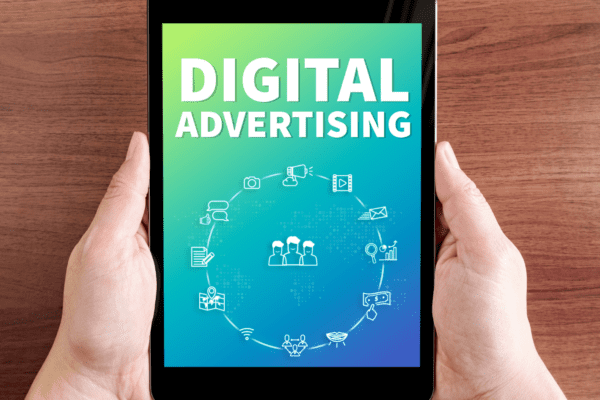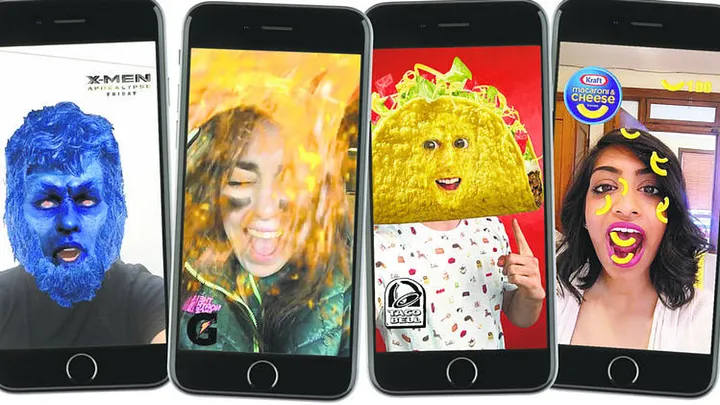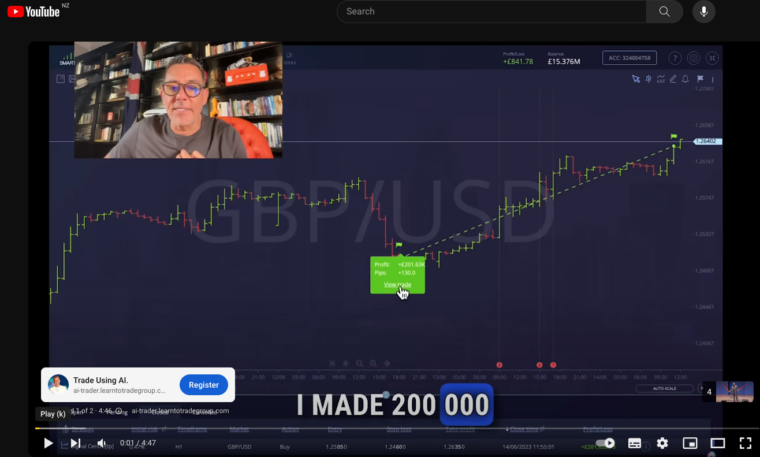What is Digital Advertising?

Filters
Results
Digital Advertising is another name for Digital Marketing right? Not quite. Digital Marketing is the overall umbrella term covering many categories including strategy. So what is Digital Advertising then? In short, it is all the advertising avenues available to you within this Digital Marketing realm. In the ever changing landscape of marketing, digital advertising has emerged as a game-changer. It has revolutionised the way businesses connect with their target audiences. As consumers increasingly embrace digital platforms, savvy marketers are using the vast potential of this mode of advertising to reach, engage, and convert prospective customers like never before.
At the heart of digital advertising, lies the ability to precisely target and personalise advertising campaigns. Unlike traditional advertising methods, digital platforms offer a wealth of data and insights that allow businesses to tailor their messaging and delivery to specific demographics, interests, behaviours, and even geographic locations.
There are many elements to advertising in the digital world. We’ve broken them down into bite-sized chunks to help you understand each one.
Digital Advertising Areas:

SEM (Search Engine Marketing)
You might be thinking what the heck is search engine marketing? SEM stands for Search Engine Marketing. It is a form of digital marketing that focuses on promoting websites and increasing their visibility on search engines like Google, Bing, and Duckduckgo.
SEM encompasses two main strategies:
Search Engine Optimization (SEO)
SEO involves optimising athe content of a website, the structure, and other elements to improve its ranking in organic (non-paid) search engine results. This includes techniques like keyword research, on-page optimisation, technical SEO, content creation, and link building.
Paid Search Advertising (Pay-Per-Click or PPC)
Paid search advertising, also known as Pay-Per-Click (PPC) advertising, involves placing ads on search engine results pages (SERPs) for specific keywords or phrases. Advertisers bid on these keywords and pay a fee each time their ad is clicked by a user. Popular PPC platforms include Google Ads and Microsoft Advertising (Bing Ads).

The primary goal of SEM is to increase a website’s visibility and drive more qualified traffic from search engines, ultimately leading to higher engagement, conversions, and revenue. By combining SEO and PPC strategies, businesses can achieve better search engine rankings, reach a wider audience, and target users at different stages of the buyer’s journey.
Social Media Advertising
Social media advertising has also emerged as a potent force in the digital realm. With billions of active users across platforms like Facebook, Instagram, Twitter, and LinkedIn, businesses can leverage technical targeting capabilities to serve highly relevant ads to their ideal customers. Social media advertising not only drives brand awareness and engagement but also offers valuable retargeting opportunities to nurture leads and convert prospects into loyal customers. Some examples of major brands nailing the social media game include Wendy’s, Netflix and Hell pizza.
Sponsored ads
Sponsored ads on social media platforms have emerged as a powerful advertising tool for businesses to reach and engage with their target audiences effectively. These ads are strategically placed within the news feeds or content streams of users. They blend seamlessly with organic content while taking advantage of advanced targeting capabilities.
Social media platforms like Facebook, Instagram, Twitter, and LinkedIn offer targeting options that allow advertisers to precisely define their ideal audience based on factors such as demographics, interests, behaviours, and geographic locations. Sponsored ads can take various formats, including image posts, video content, carousel ads, and even interactive experiences, designed to capture user attention and drive meaningful actions.
With detailed analytics and performance tracking, businesses can continually optimise their sponsored ad campaigns. This ensures maximum return on investment while nurturing brand awareness, generating leads, and driving conversions.
Influencer marketing
Influencer marketing is a form of social media marketing that involves partnering with influential people or creators who have a dedicated following within a specific niche or industry. The goal is to leverage the influence, credibility, and reach of these individuals to promote a brand’s products, services, or messaging to their audience.
Many celebrities are into influencer marketing (Mr Beast anyone?) but it can also work well for anyone with a decent following. If you are looking to try influencer marketing, carefully select influencers who align with your values, target audience, and marketing goals.

Display advertising
Not to be confused with Google display ads, display advertising involves placing visual ads on websites, apps, and other digital platforms. It is another invaluable component of digital marketing strategies. Through programmatic advertising and real-time bidding, businesses can efficiently place their ads on the most relevant and high-traffic websites, ensuring maximum visibility and reach.
Banner Ads
Display ads are visually striking graphic units strategically placed on digital platforms that command attention and drive action. They take advantage of programmatic targeting reaching defined audiences based on data, and real-time bidding for efficient placement.
Versatile assets for brand awareness or direct response, banner ads combine engaging visuals, compelling copy, and clear CTAs to capture interest and spur desired actions like site visits, leads, and conversions.
Despite new ad formats, banner ads’ ability to cut through noise and deliver measurable results solidifies their relevance. Well-executed banner campaigns are a good choice to maximise ROI and create impactful digital outreach.
Rich Media Ads
Rich media ads are advanced display advertisements that incorporate multimedia elements like video, audio, animations, or interactive features to create an engaging and immersive user experience. Unlike static banner ads, rich media ads use technologies like HTML5, JavaScript, and streaming video to deliver dynamic, visually striking content that can expand, float, or integrate seamlessly with a web page.
These ad units offer greater interactivity, allowing users to engage directly with the ad through features like games, quizzes, or product visualizers. Rich media ads capture user attention more effectively and drive higher engagement rates, making them a powerful tool for brand storytelling and digital advertising campaigns that make an impact
Native Advertising
Native advertising has emerged as a powerful and effective approach to reaching audiences in a non-intrusive manner. Unlike traditional display ads, which can often feel disruptive, native ads seamlessly blend into the surrounding content, providing a more organic advertising experience.
A great example of native advertising using content branding is brands using clever filters through social media apps. Videos are also great for native marketing as it can blend into an entertainment aspect rather than just an ad or other traditional media.

Video advertising
YouTube Ads
YouTube’s platform hosts a collection of ad slots spread throughout its video content. These advertising opportunities are made available to sponsors via an auction system. When a user watches a YouTube clip, a real-time bidding process commences behind the scenes. Advertisers bid to have their promotional material displayed during that specific ad slot.
Marketers can narrow their ad targeting based on criteria such as viewer demographics, topics of interest, video subject matter, geographic location, and more. This narrows down the likelihood of reaching their target audience.
YouTube’s ad ranking algorithm evaluates elements like an advertiser’s bid price and the anticipated value of the ad view or engagement to determine which promotional content will populate an ad slot. Once an advertiser secures the winning bid for a particular slot, their video advertisement shows before, during (mid-roll), and after the primary YouTube video.
The platform accommodates various ad formats, including skippable in-stream ads, non-skippable in-stream ads (can be very annoying), bumper ads, sponsored cards, and overlay ads. When users view or interact with an advertisement, YouTube generates revenue Then, a predetermined portion of this is given to the content creator.

Over-The-Top (OTT) Ads:
Over-the-top (OTT) ads are video advertisements that are displayed on streaming platforms and services that deliver content over the internet, bypassing traditional cable or satellite TV providers.
OTT platforms refer to services like TVNZ+, YouTube or ThreeNow etc. that allow users to stream video content directly over the internet on connected devices like smart TVs, phones, tablets and more.
Since these platforms distribute content through the open internet instead of closed cable/satellite systems, they have the ability to show video ads in a variety of ways during or around the streaming content.
Some common examples of OTT video ads include:
- Pre-roll ads that play before the main content
- Mid-roll ads that are inserted during content breaks
- Overlay ads that appear as static or video banners on the player screen
- Sponsored content integrations within the streaming shows and movies
OTT ads allow advertisers to reach the growing number of cord-cutter and cord-never audiences who consume content primarily through internet streaming. Targeting can be enhanced using data about users’ viewing habits, demographics and interests.
The rise of OTT viewing has created new advertising opportunities for brands to connect with audiences through advanced digital video ad experiences.
Mobile Advertising:
In-App Ads:
In-app ads are advertisements that are displayed within mobile applications (apps) on smartphones, tablets, and other mobile devices. These ads are served to users while they are using or engaged with an app.
Mobile Web Ads:
Ads optimised for mobile web browsers. Mobile web ads are advertisements that are displayed on websites and web pages when accessed from mobile devices like smartphones and tablets. These ads are designed specifically for the mobile web browsing experience.
Some common types of mobile web ads include:
Display Ads
These are basic banner ads that appear on mobile websites, typically at the top or bottom of the page.
Interstitial Ads
Full-screen ads that cover the interface of the website/page for a brief period of time.

Native Ads
Ads that match the look and feel of the mobile website content, blending into the page seamlessly.
Video Ads
Video advertisements that can auto-play or require user interaction before playing.Rich Media Ads
Engaging ad formats that incorporate multimedia like audio, video, animations, and user interactions.
Mobile web ads allow advertisers to reach users browsing the mobile web and can be targeted based on factors like geo-location, browsing behaviour, and mobile device characteristics.
The ads are typically served through mobile ad networks or supplied by the publisher of the mobile website itself. Common pricing models include CPC (cost-per-click), CPM (cost-per-thousand-impressions), and CPA (cost-per-acquisition).
Effective mobile web ad strategies require optimising ad creatives and placements for smaller mobile screens and potentially slower network connections compared to desktop web browsing.
Location-Based Ads:
This style of mobile web ads are advertisements that are targeted and delivered to users based on their real-time geographic location data obtained from their mobile device. These ads leverage location tracking capabilities like GPS, WiFi positioning or cell tower triangulation.
There are a few key aspects of location-based mobile web ads:
Geo-Targeting/Geo-Fencing:
Advertisers can set geographic boundaries or areas around specific locations to serve ads only to users within those defined areas. For example, promoting a restaurant to people within a 1.5km radius.
Contextual Relevance:
Location data allows ads to be highly contextualised and relevant based on where the user currently is. For instance, showing ads for nearby stores/services when someone is out shopping.
Proximity Marketing:
Ads can trigger when a user is in close proximity to a particular place of interest like a retail store, offering timely promotions to drive foot traffic.
Location-Aware Creative:
The ad messaging and creative can be dynamically updated based on the user’s location for a personalised experience.
Accurate location data enables powerful audience segmentation and real-time marketing opportunities for brands and businesses with local/geographic relevance.
However, user privacy is an important consideration with location tracking. Ad platforms must comply with regulations and allow users to control location data sharing permissions.
Location-based mobile web ads bring a valuable layer of real-world context to mobile advertising. This is achieved by reaching audiences at relevant times and places.
Email Marketing:
Building an email list is a valuable tool to reach your customers and clients directly. If you’ve been building your social handles and believe this is how you are best to keep connected with your audience, you may want to reconsider.
Meta and other social media platform providers are known to disable your page overnight with either no recourse of action to get it back. That can be thousands of followers you lost contact with – instantly. On the flipside, email marketing lists are much more difficult to be stolen or shut down. Definitely a point worth considering when thinking about how to keep up communications with your audience.
Promotional Emails:
Promotional emails, also known as marketing emails or email advertisements, are email messages sent by companies, brands, or advertisers. The primary goal can be promoting a product, service, offer, or content.
Some key aspects of promotional emails in digital advertising:
- Advertisers build email lists by collecting email addresses from customers, website visitors who opt-in, or through list purchases/rentals. Having a quality email list is crucial.
- Promotional emails can take various forms like newsletters, dedicated promotional blasts, abandoned cart reminders, re-engagement campaigns, etc.
- They typically contain promotional messaging, product/service information, visuals, calls-to-action (CTAs) encouraging clicks/conversions, and special offers or discounts.
- Email lists can be segmented based on behaviours, interests, demographics etc. to make promotional emails more personalised and relevant.
- Email platforms provide metrics like open rates, click-through rates, conversion tracking to measure campaign effectiveness.
- There are laws like CAN-SPAM in the United States that regulate commercial email practices regarding consent, opt-outs, and transparency.
When executed properly, promotional email campaigns enable advertisers to reach current/prospective customers directly in their inboxes. It uses tailored messaging to drive engagement, website traffic, leads and sales cost-effectively.
However, irrelevant or excessive promotional emails can be perceived as spam. Balancing promotion with value is important in email marketing strategies.
Sponsored Emails:
Sponsored emails are promotional email messages that advertisers pay to have delivered directly to the inboxes of an email publisher’s opt-in subscriber list.
The key aspects of sponsored emails include:
Paid Placement:
Advertisers pay email publishers/providers a fee to send their promotional content to the publisher’s email list. This is usually on a CPM (cost per thousand impressions) basis.
Third-Party Lists:
The advertiser does not use their own email list, but instead pays to access the publisher’s rented or sponsored email list.
List Segmentation:
Email publishers often allow targeting options so advertisers can segment sponsored emails based on the list subscribers’ interests, demographics, etc.
Content Control:
Advertisers provide the creative email content and have control over the messaging, offers, calls-to-action promoting their products/services.
Disclosure:
Sponsored emails should be clearly labelled as such to distinguish them from normal editorial emails from the publisher.
Performance Tracking:
Typical metrics like open rates, clicks, conversions are tracked and reported.

The benefits of sponsored emails include the ability to reach very targeted, opt-in audiences at scale that advertisers may not have access to otherwise. However, being overly promotional in sponsored emails to rented lists can impact engagement and deliverability.
Overall, sponsored emails allow advertisers to extend their email marketing reach through publisher partners in an advertising-supported model.
Affiliate Marketing:
Advertisers reward affiliates (publishers or influencers) for driving traffic or sales to their products or services.
Affiliate marketing is a performance-based advertising model where a company (the advertiser) pays commission to third-party publishers (affiliates) for generating trackable customer leads or sales from their marketing efforts.
Here are some key points about affiliate marketing:
Affiliate Network:
Advertisers work with affiliate networks that provide a platform connecting them with potential affiliate publishers to promote their products/services.
Publisher Promotion:
Affiliates (bloggers, influencers, niche websites etc.) market the advertiser’s offerings on their platforms through links, banners, product reviews etc.
Tracking the Cookies: 🍪
When a consumer clicks on an affiliate link/ad and completes a desired action like a purchase, the unique affiliate is tracked via cookies or IDs.
Commission Structure:
Advertisers pay affiliates a pre-agreed commission. It’s usually a percentage of the sale or a fixed fee per lead/sale generated by that affiliate.
Performance-Based:
Affiliates only earn commission when they actually drive a concrete result, not just for displaying ads.
Transparency:
There should be disclosure that content contains affiliate links as a paid promotion.
For advertisers, affiliate marketing provides a low-risk way to drive measurable results and scale their reach via trusted third-party influencers and publishers. For affiliates, it’s an additional revenue stream by monetizing web traffic they drive to merchants.
Popular examples of affiliate marketing include product review blogs, influencer promotions, loyalty/rewards sites and various other content-driven affiliate models.
Content Marketing:
Sponsored Content:
Branded content created and distributed on third-party websites or platforms. Sponsored content refers to promotional or marketing materials that are created and paid for by advertisers, but are published and distributed through third-party content platforms or publishers.
Some key aspects of sponsored content include:
Native Integration:
Sponsored content is designed to seamlessly blend in with the normal editorial content on the publishing platform in both format and subject matter relevance.
Content Types:
It can take various forms like articles, videos, social media posts, infographics, interactive experiences etc. matching the publisher’s content style.
Paid Placement:
Brands pay publishers a sponsorship fee to create and distribute this promotional content within their content channels/feeds.
Labelling:
Sponsored content must be clearly labelled or identified as such for transparency about the paid promotion.
Valuable Content:
While promotional, sponsored content aims to provide value and insights relevant to the publisher’s audience.
Audience Targeting:
The goal of sponsored content is for brands to associate with trusted, popular content platforms. It leverages native advertising to engage audiences with promotional messages in a contextual, non-intrusive way.
Some other examples include sponsored articles on major media sites (Stuff have quite a bit of this type of content), influencer posts labelled as paid partnerships, branded content hubs and other content-driven marketing on publishing platforms.

Native Content:
Native content refers to promotional content that is designed to match the form, style, and overall user experience of the platform or publisher’s editorial content where it appears.
Some key aspects of native content include:
Integrating into the platform:
Native content seamlessly blends into the normal user experience and content feed of a particular website, social media platform, app, etc. It matches the look and feel.
Native content is non-intrusive:
Unlike disruptive banner ads, native content aims to be additive to the user experience by providing relevant information or entertainment.
Differing content types:
It can take various forms like articles, videos, images, user-generated posts, etc. fitting the specific content formats of the platform.
Requires full-disclosure:
Native content carries labels like ‘sponsored’ or ‘promoted’ to clearly mark it as paid promotional material.
Native advertising is relevant in context:
The content topic, tone, and style aim to align with the interests and context of the platform’s main editorial content and audience.
Targeting your audience:
Advertisers target native content based on user demographics, interests, behaviours, and more across various content platforms.
The main goal is for brands to engage users with promotional content in a contextually relevant way without interrupting their normal content consumption experience.
Examples include sponsored stories on news feeds, branded videos on platforms like YouTube, promoted posts/tweets on social media, and other seamlessly integrated paid content placements.
Digital advertising is here for the long game
Beyond targeting and personalisation, digital advertising also offers good measurability and data-driven insights. With advanced analytics and tracking capabilities, businesses can monitor the performance of their campaigns in real-time, optimising for better results and maximising their return on investment (ROI). This data-driven approach allows for continuous improvement and refinement, ensuring that advertising budgets are utilised effectively.
As the digital landscape continues to evolve, businesses that embrace the power of digital advertising will gain a significant competitive advantage. By leveraging the targeting, personalisation, measurability, and versatility of digital advertising, companies can effectively reach and connect with their audiences, drive conversions, and ultimately achieve sustainable growth in an increasingly digital world.



